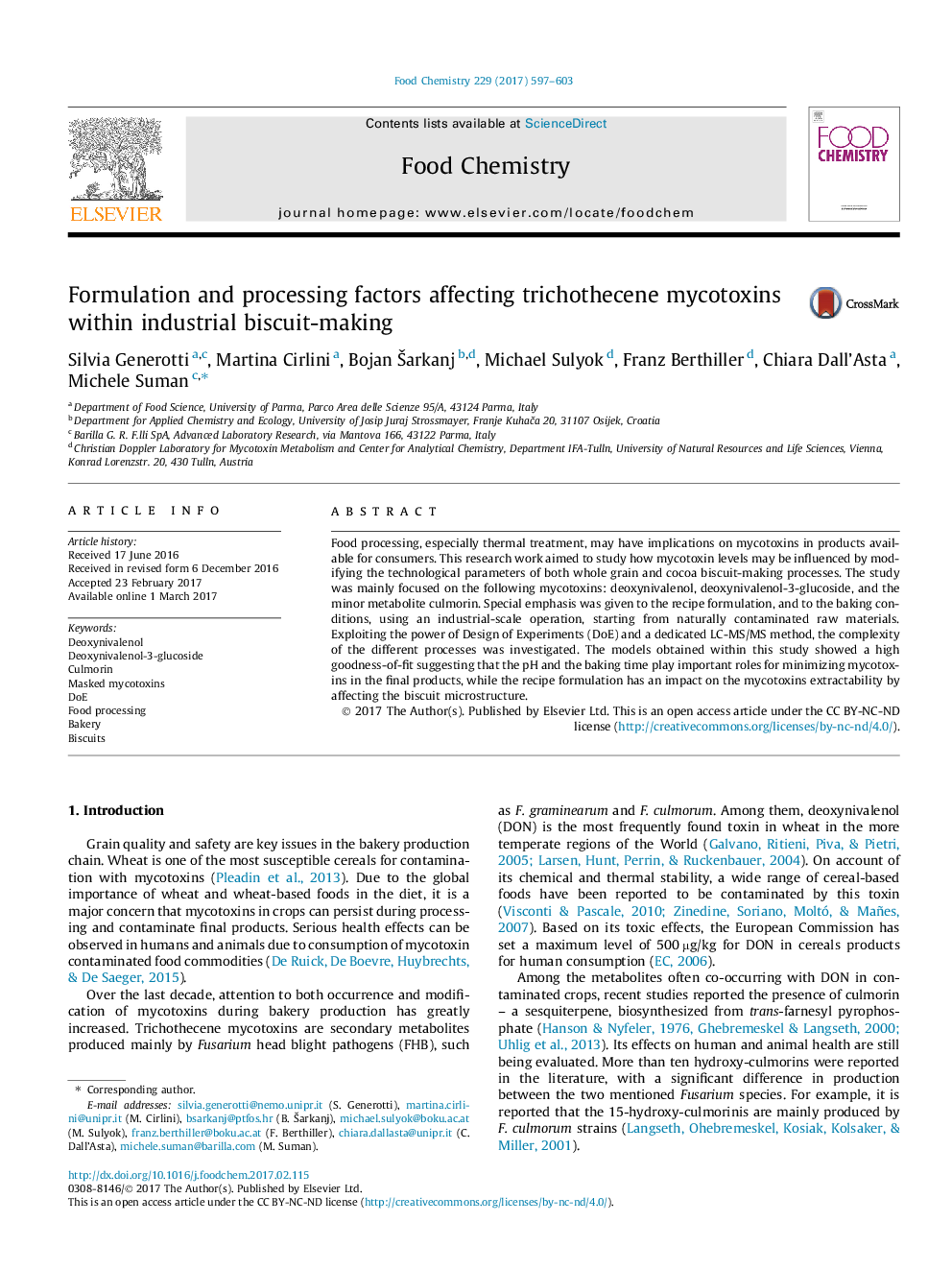| Article ID | Journal | Published Year | Pages | File Type |
|---|---|---|---|---|
| 5133651 | Food Chemistry | 2017 | 7 Pages |
â¢Levels of mycotoxins can be influenced by biscuit-making.â¢Predictive models combining DoE approaches & LC-MS permit optimization of industrial processes.â¢Increasing pH induced DON decrease, while an increase in baking time reduced DON/DON3Glc content.â¢Culmorin concentration positively correlated to DON: a reduction up to 80% was evaluated.â¢Recipe formulation has an impact on mycotoxin extractability, affecting biscuit microstructure.
Food processing, especially thermal treatment, may have implications on mycotoxins in products available for consumers. This research work aimed to study how mycotoxin levels may be influenced by modifying the technological parameters of both whole grain and cocoa biscuit-making processes. The study was mainly focused on the following mycotoxins: deoxynivalenol, deoxynivalenol-3-glucoside, and the minor metabolite culmorin. Special emphasis was given to the recipe formulation, and to the baking conditions, using an industrial-scale operation, starting from naturally contaminated raw materials. Exploiting the power of Design of Experiments (DoE) and a dedicated LC-MS/MS method, the complexity of the different processes was investigated. The models obtained within this study showed a high goodness-of-fit suggesting that the pH and the baking time play important roles for minimizing mycotoxins in the final products, while the recipe formulation has an impact on the mycotoxins extractability by affecting the biscuit microstructure.
Graphical abstractDownload high-res image (115KB)Download full-size image
